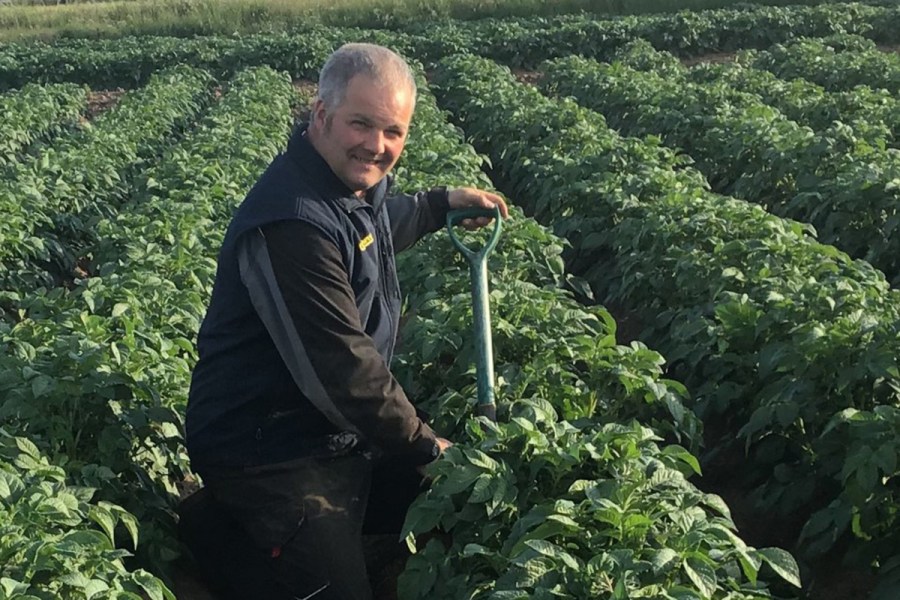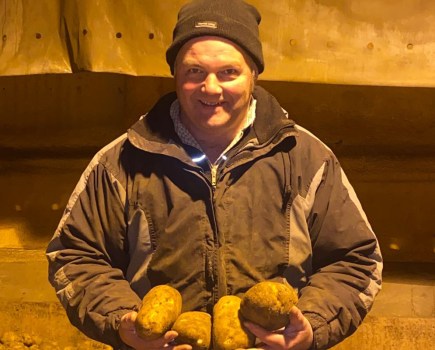By Andrew Wilson
We’ve had a busy month. We finished combining on the 1 September, with some very average spring beans and since then have got some muck spread and the last cover crops drilled.
In times when costs are rocketing, every single one needs to be justified. Cover crops are viewed by some as unnecessary and recreational, but for us they have consistently delivered value over cost. We’ve grown them since 2011, and currently have about 120ha sown, the majority in front of potatoes.
Seed mixes vary according to each site but focus on nematode reduction (we use very few nematicides now), rooting (to reduce cultivation and enhance drainage), and soil armour (to reduce erosion and build organic matter). Oil radish, oats and phacelia is a common mix. Beans also feature where they’re not in the farm’s rotation.
We don’t always desiccate them after winter, but always incorporate them before the primary cultivation to keep the physical matter in the planted row. Bed-tilling has all but been eliminated as a result. For combinable crops, we will apply glyphosate and direct drill the following crop, using the decaying cover crop mulch to suppress weeds, which has worked well. The key has been not to let them get too thick, and not spend too much on fancy seed mixes. All cover crops are direct drilled with a big old disc drill.
We started sowing winter cereals a fortnight ago, with a mixture of plough, min-till and strip-till establishment, dictated mostly by rotational position. Most varieties remain, with the addition of Tardis barley and KWS Dawsum wheat which we’ve sown to review.
Our oilseed rape looks terrible. The promised rain after drilling on 19 August didn’t amount to more than a splash, and until recently growth has been very slow. Flea beetles and slugs are having a party in the field, and I am sure will invite pigeons along soon. I remember now why I stopped growing it back in 2010!
Potato harvesting here started on 25 September with some crisping potatoes. Yields are currently averaging about 35t/ha, but we have harvested the best crisping crops so expect that to fall. Quality is at least good, which helps when faced with what will be an awfully expensive storage season due to electricity prices rocketing. DMN becoming approved in the UK is a glimmer of positivity at least.
Enthusiasm is always low when one is facing a break-even crop at best. My eternal farmer optimism has been set to maximum for some years now, but inadequate contract prices, soaring input costs and ever volatile weather are really putting the boot in at present. We don’t have fat on our backs and growers have serious cashflow issues between now and when the crop is finally paid for. I know of many growers cutting area back for next year, and none at all expanding. One only need look in the farming press to see ‘change in farming policy’ sales, often driven by the cessation of a major enterprise like potatoes. This is, I fear, a continuing trend.
Scale is a strange thing in farming. Our most profitable crops are those grown on our own land at home, but we haven’t enough suitable land here to fill our main store without bolstering it with additional rented-in land. Larger growers, that have made significant investments in machinery, storage and infrastructure, have some pressure on that isn’t recognised or appreciated by the markets and face difficult decisions. The most profitable (and sustainable) growers are those growing solely on their own land, with muck and water available, cheap kit and available labour. We may find ourselves pulling back to that level, or even exiting the industry if things don’t improve.
I don’t say that lightly at all. I’m passionate about potatoes, and we’re looking for solutions not problems, but I can’t get away from the stratospheric risk for invisible reward. The processors have harvested valuable data from us that will benefit them, rather than us. The workload is relentless, and the challenges keep coming. I started harvesting spuds picking them up by hand behind a Ransome spinner and single row Johnson hoover in the mid-1980s. Thankfully things have progressed, but are we better off? Its times like this that I’d love my late dad’s perspective, but alas, I’m pretty sure what he’d say. It’d be a mixture of ‘tell them to stuff it’ and ‘it’ll come right, it always does’.
We are sticking at it for now, albeit with a reduction in area of about 30%. Everything is under scrutiny. One part of our dilemma is storage – if we cut area back too far, we lose our short-term tonnage, which is where autumn cashflow comes from. Any less than 65ha here would mean serious change to long-term relationships and facilities, and it’s not a decision that can be made on a whim. I love being a part of the potato industry, but I am not willing to watch corporate multinationals drive us out of business.
Factories need potatoes, farms do not, that much is certain. Eventually that penny will drop, up in the ivory towers, and progress made. But will it be too late? Safe harvesting everyone.
This article was taken from the latest issue of CPM. For more articles like this, subscribe here.




